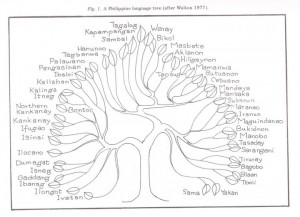
"PHILIPPINE LANGUAGE TREE", William Henry Scott (1984) … [Read more...]
Mandirigma Research Organization

"PHILIPPINE LANGUAGE TREE", William Henry Scott (1984) … [Read more...]
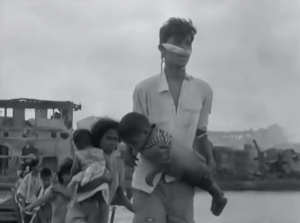
http://youtu.be/RYlEC94XgGU The Battle of Manila - Starts with discussion from 2 Vets memories of the WW2 Japanese invasion and internment of civilians to the military incursion to rescue the civilian prisoners at Santo Tomas and Battle of Corregidor. Battle scenes in Philippines, views of rescued US civilians, street fighting in Manila at Intramuros, bridges destroyed. Destruction of buildings from cannon fire. Japanese were told 'hold Manila or burn it' so it burned. They won by taking Intramuros. The surviving Filipinos from Intramuros did a mass exodus across the river. MacArthur then returned to Manila. … [Read more...]

Sticks of Death (Arnis: The Sticks of Death) This Filipino Martial Arts action film features Roland Dantes. Dantes plays Johnny Guerrero, a man who masters the ancient art of arnis with the help of his grandfather to get revenge on a group of crooks who attempted to beat him to death. Using two deadly sticks, slingshots, poisonous darts and more, Johnny also seeks to bring down an international drug ring and fights at a renowned arnis tournament alongside an Interpol agent. Director: Ave C. Caparas Release Date: 1984 Cast: Roland Dantes, Rosemarie Gil, Veronica Jones, Anita Linda, Mario Montenegro, Rusty Santos … [Read more...]
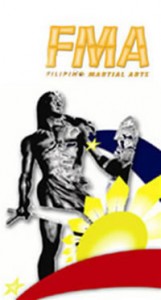
Kapisanang Mandirigma founders Guro Ariel Flores Mosses, Guro Arnold Noche, Guro Bud Balani and Guro Dino Flores mentioned in the Virtual Filipino Martial Arts Museum's "Top 200 Living Guro's" List Exerpt from: http://www.filipinomartialartsmuseum.com/index.htm Welcome to the Filipino Martial Arts Museum, the virtual museum and repository of knowledge of Filipino Martial Arts (FMA) systems, styles, masters, history, literature and virtual artifacts. The writing ranges from incisive to light-hearted to even controversial, and the literary and virtual exhibits encompass all aspects of Filipino martial arts systems and disciplines including arnis, kali, eskrima, dumog, buno, hilot and other indigenous arts of the Philippines. Authors are well-known experts in their fields as well as volunteer writers. Article submissions are encouraged. The authors of these articles have consented to have their articles reprinted and republished in whole or in part, as long as the author’s name, website reference address and this website are acknowledged. I would like this site to become the most comprehensive online reader-written encyclopedia on FMA. It is meant to be a contemporary or living as well as an archival museum. Send your submissions for The Top 200 Living Masters, The Top 100 FMA Schools and other FMA Museum Who’s Who series, and then see your submissions published online. We also accept original articles and online book publications. http://www.filipinomartialartsmuseum.com/index.htm http://www.filipinomartialartsmuseum.com/FMA_masters-systems-schools/FMAguros-living-list.html 1 Dino Flores Lameco Los Angeles, CA, USA 2 Hospecio Balani Lameco Los Angeles, CA, USA 3 David Gould Lameco 4 Leonard Trigg Lameco 5 Arnold Noche Lameco Los Angeles, CA, USA 6 John Jacobo Bakbakan Maryland, USA 7 Roger Agbulos Lameco North Hills, CA, USA 8 Marc Denny Dog Brothers CA, USA 9 Eric Knauss Dog Brothers CA, USA 10 Tim Hartman Modern Arnis USA 11 Kelly Worden Modern Arnis WA, USA 12 Myrlino Hufana Modern Arnis WA, USA 13 Jeffrey Delaney Modern Arnis Canada 14 Randi Schea Modern Arnis 15 Jay de Leon Modern Arnis, Los Angeles, CA, USA 16 Alvis Solis Seneres Arnis TX, USA 17 Ron Balicki Inosanto Kali Los Angeles, CA, USA 18 Diana Balicki Inosanto Kali Los Angeles, CA, USA 19 Ramon Rubia San Miguel Eskrima CA, USA 20 Mel Lopez Villabrille-Largusa 21 Greg Alland Dekiti-Tirsia-Siradas 22 Mary Ann Presas Modern Arnis San Pablo, CA, USA 23 Demetrio Presas Modern Arnis San Pablo, CA, USA 24 Remy Presas, Jr. Modern Arnis San Pablo, CA, USA 25 Tom Bolden Modern Arnis NY, USA 26 Jerome Barber Modern Arnis NY, USA 27 Percival "Val" Pableo Doce Pares 28 Graciella Casillas CA, USA 29 Raffy Pambuan Pambuan Tulisan Arnis FL, USA 30 Steven Dowd Arnis Balite Fallon, NV, USA 31 Hock Hochheim Modern Arnis, Kombatan TX, USA 32 Jorge Penafiel Balintawak Cincinatti, OH, USA 33 Larry Alcuizar Doce Pares Los Angeles, CA, USA 34 Felix Valencia Lameco Santa Barbara, CA, USA 35 Anthony Davis Cabales Serrada CA, USA 36 Sultan Uddin Cabales Serrada CA, USA 37 Darren Tibbon Cabales Serrada CA, USA 38 Jason Inay Inayan Eskrima San Jose, CA, USA 39 Jena Inay Inayan Eskrima San Jose, CA, USA 40 Ray Dionaldo Sayoc Kali FL, USA 41 Edwin Mosqueda Doce Pares 42 Nate Defensor Doce Pares Chicago, IL, USA 43 Conrado Manaois Manaois Eskrima Los Angeles, CA, USA 44 Dan Anderson Modern Arnis WA, USA 45 Rocky Pasiwk Modern Arnis 46 Ron Harris Original Filipino Tapado New Orleans, LA, USA 47 Tim Waid Pekiti-Tirsia TX, USA 48 Leslie Buck Pekiti-Tirsia TX, USA 49 Erwin Ballarta Pekiti-Tirsia TX, USA 50 Gaudencia Ruby Comjuka TX, USA 51 Phil Rapagna Lameco, Inosanto Kali Los Angeles, CA, USA 52 Victor Gendrano Inosanto Kali Los Angeles, CA, USA 53 Stephen Aron Inosanto Kali Glendora, CA, USA 54 Menandro "Anding" de Leon Arnis de Leon Garland, TX, USA 55 Jaime Abregana Hawaii, USA 56 Vincent Cabales Cabales Serrada CA, USA 57 Vincent Cabales, Jr. Cabales Serrada CA, USA 58 Carlito Bonjoc Mata sa Bagyo CA, USA 59 Mark Wiley Cabales Serrada 60 Tom Bisio San Miguel Eskrima 61 Rafael Kayanan Sayoc Kali 62 Tom Kier Sayoc Kali 63 Jeff Chung Sayoc Kali 64 Paul Vunak Inosanto Kali CA, USA 65 Burton Richardon Inosanto Kali HI, USA 66 Steve Grody Lameco 67 Steve Tarani 68 Blaise Loong 69 Cass Magda CA, USA 70 Rick Tucci Inosanto Kali Princeton, NJ 71 James A. Keating Comtech Walla Walla, WA, USA 72 Ed Goco Galang Las Vegas, NV, USA 73 Michael Replogle Modern Arnis USA 74 Felix Roiles Doce Pares Los Angeles, CA, USA 75 Spencer Gee Pananandata NY, USA 76 Bruce Ricketts Kali Ilustrisimo San Diego, CA, USA 77 Maurice Gatdula CA, USA 78 Mar de Leon Tumba-tumba Arnis San Diego, CA, USA 79 Chris Siangco Pedoy Derobio Eskrima San Diego, CA, USA 80 Ernie Reyes, Jr. San Jose, CA, USA 81 Alex France Kombatan CA, USA 82 Alex Ercia Kombatan CA, USA 83 Arthur Gonzalez De Cuerdas … [Read more...]
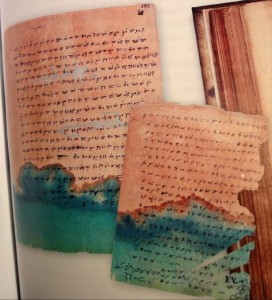
Baybayin Baybayin is a pre-Spanish Philippine writing system. It is a member of the Brahmic family and is recorded as being in use in the 16th century. It continued to be used during the Spanish colonization of the Philippines up until the late 19th Century. The term Baybay literally means "to spell" in Tagalog. Baybayin was extensively documented by the Spanish. Some have attributed it the name Alibata, but this name is incorrect. (The term "Alibata" was coined by Paul Rodriguez Verzosa after the arrangement of letters of the Arabic alphabet alif, ba, ta (alibata), “f” having been eliminated for euphony's sake." ) Versoza's reasoning for creating this word was unfounded because no evidence of the baybayin was ever found in that part of the Philippines and it has absolutely no relationship to the Arabic language. Furthermore, no ancient script native to Southeast Asia followed the Arabic arrangement of letters, and regardless of Versoza's connection to the word alibata, its absence from all historical records indicates that it is a totally modern creation. The present author does not use this word in reference to any ancient Philippine script. Modern scripts in the Philippines, descended from Baybayin, are Hanunó'o, Buhid, Tagbanwa, the Kapampangan script and the Bisaya script. Baybayin is one of a dozen or so individual writing systems used in Southeast Asia, nearly all of which are abugidas where any consonant is pronounced with the inherent vowel a following it— diacritical marks being used to express other vowels (this vowel occurs with greatest frequency in Sanskrit, and also probably in all Philippine languages). The term Baybay literally means "to spell" in Tagalog. Baybayin was extensively documented by the Spanish. Some have attributed it the name Alibata, but this name is incorrect. (The term "Alibata" was coined by Paul Rodriguez Verzosa after the arrangement of letters of the Arabic alphabet alif, ba, ta (alibata), “f” having been eliminated for euphony's sake." ) Versoza's reasoning for creating this word was unfounded because no evidence of the baybayin was ever found in that part of the Philippines and it has absolutely no relationship to the Arabic language. Furthermore, no ancient script native to Southeast Asia followed the Arabic arrangement of letters, and regardless of Versoza's connection to the word alibata, its absence from all historical records indicates that it is a totally modern creation. The present author does not use this word in reference to any ancient Philippine script. Modern scripts in the Philippines, descended from Baybayin, are Hanunó'o, Buhid, Tagbanwa, the Kapampangan script and the Bisaya script. Baybayin is one of a dozen or so individual writing systems used in Southeast Asia, nearly all of which are abugidas where any consonant is pronounced with the inherent vowel a following it— diacritical marks being used to express other vowels (this vowel occurs with greatest frequency in Sanskrit, and also probably in all Philippine languages). Origins Baybayin was noted by the Spanish priest Pedro Chirino in 1604 and Antonio de Morga in 1609 to be known by most, and was generally used for personal writings, poetry, etc. According to William Henry Scott, there were some datus from the 1590s who could not sign affidavits or oaths, and witnesses who could not sign land deeds in the 1620s. There is no data on when this level of literacy was first achieved, and no history of the writing system itself. There are at least six theories about the origins of Baybayin. Kawi Kawi originated in Java, and was used across much of Maritime Southeast Asia. Laguna Copperplate Inscription. The Laguna Copperplate Inscription is the earliest known written document found in the Philippines. Butuan Ivory Seal It is a legal document, and has inscribed on it a date of Saka era 822, corresponding to April 21, 900 AD Laguna Copperplate Inscription#cite note-bibingka-1. It was written in the Kawi script in a variety of Old Malay containing numerous loanwords from Sanskrit and a few non-Malay vocabulary elements whose origin is ambiguous between Old Javanese and Old Tagalog. One hypothesis therefore reasons that, since Kawi is the earliest attestation of writing on the Philippines, then Baybayin may be descended from Kawi. A second example of Kawi script can be seen on the Butuan Ivory Seal, though it has not been dated. An earthenware burial jar, called the "Calatagan Pot," found in Batangas is inscribed with characters strikingly similar to Baybayin, and is claimed to have been inscribed ca. 1300 AD. However, its authenticity has not yet been proven. Old Sumatran "Malay" scripts Another hypothesis states that a script or script used to write one of the Malay languages was adopted and became Baybayin. In particular, the Pallava script from Sumatra is attested to the 7th century. Sulawesi The Liboginese and/or Makassarese scripts of Sulawesi … [Read more...]
Mandirigma.org - Online Since 1998 Mandirigma Research Organization also known as mandirigma.org is a project of Kapisanang Mandirigma. Their focus includes preserving and promoting the Warrior Arts commonly known as Kali, Eskrima and Arnis. The Warrior Arts is one of the most important aspects of any society because its very nature is to defend and preserve the culture. Thus, mandirigma.org is also involved in researching issues from ancient to current. The primary objective of mandirigma.org is to do its part in keeping alive ancient knowledge and give honor to the sacrifices made by previous generations.Using both traditional and modern methods in its work, mandirigma.org has organized, collaborated with and participated in classes, conferences, demonstrations, festivals, lectures, seminars and workshops with prominent college and community organizations. Aside from their hands-on approach, mandirigma.org utilizes multimedia technologies such as audio, desktop, video and web to reach people across the globe. Researching since the 1970′s and online since 1998, mandirigma.org believes in being actively involved in giving back to the community. They have collaborated with and volunteered in various non-profit agencies. They have also arranged fundraisers in order to assist causes for indigenous tribal groups and organizations dedicated to cultural preservation in the Philippines. mandirigma.org believes that this expansive pursuit is at its best a collaborative effort. This has allowed mandirigma.org to meet and work with many fine individuals and organizations throughout the Philippines, the United States and the world. mandirigma.org welcomes all with an open and positive mind to participate and join them on this never-ending cultural adventure. This humble site is dedicated to honoring the sacrifices of Warriors throughout the many generations that have come before us. Maraming Salamat! Copyright 2012 The Mandirigma.org Logo is the property of D. Flores. It was designed by D. Flores in 1994. … [Read more...]
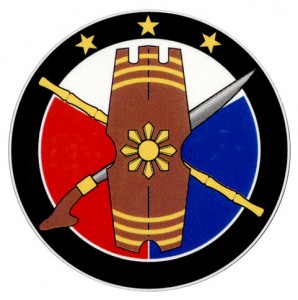
Kapisanang Mandirigma - A federation of warriors from different disciplines of the Warrior Arts of the Philippines. It is not a style, nor a representation of any singular style, but rather a federation of practitioners with similar goals to provide a vehicle for growth and personal discovery through continued training. Founded in 1998 by Guros Joel Adriatico, Hospecio "Bud" Balani Jr., Mar Elepaño, Choy Flores, Dino Flores, Arnold Noche, Gary Quan, Hans Anton Tan and Pantaleon “Mang Leo” Revilles, Jr. (RIP) from Lameco SOG (Sulite Orihinal Group), this unique federation has an ever-growing but extremely selective membership representing numerous progressive fighting styles. The ideas that interchange between the diverse styles and dedicated members create a dynamic foundation for continuously keeping the Warrior Arts of the Philippines alive with integrity for future generations. … [Read more...]
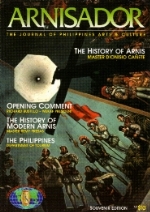
This article was reprinted with the author's permission from the Souvenir Edition of Arnisador Magazine published by Goodwill Publications Limited. More information about the magazine can be obtained by calling Peter Morgan in London at +44 (0) 171-895 0800. Saturday, June 1st, 1996 LAMECO: Legacy of Steel By Steve Tarani Swollen knuckles, bleeding forearms and battered shins - two warriors face off in a clearing. Sharp strikes of clashing rattan mix with the drawl of heavy breathing and shuffling feet. Intensely focused and alert, both combatants melt into the sweltering humidity. Glistening beads of sweat roll down to fingers wrought with open blisters. Ignoring the searing pain, each man continues fighting. Skillfully, cautiously - each life hinges upon immediate reaction to a deadly salvo of crushing blows. Such is the way of life of an Arnisador - a path chosen by Punong Guro Edgar G. Sulite. Since and before the days of Magellan, the Filipino martial arts have proven themselves highly effective standing in defiance of determined warring tribes, rabid Conquistadors and greedy foreign hordes. The LAMECO system, systematically structured and easily assimilatable according to modern training methods, is the stainless steel link in an unbroken chain of training succession. Great-grandfather to grandfather to father to son, a continual succession of knowledge and commitment breathes life into the ancient art from those very early days of foreign aggression to the current days of domestic violence. The heritage of combat-ready warriors runs deeply through the bloodline of the Sulite family tree. Born on September 25, 1957 in a rural province on the Visayan Island of Leyte, Tacloban City, Punong Guro Edgar G. Sulite was raised by a family of martial arts devotees in a rugged barrio neighborhood where deadly brawls and Bolo knife skirmishes were commonplace. In other martial arts, the attainment of a certain level automatically designates the title Master or Grandmaster. In the Philippines, there are certain norms to be satisfied before one can be called and accepted as a Master or Grandmaster. After expressing great interest in the Filipino fighting arts at a very early age, young Edgar was introduced to the rigorous training by his own father - Grandmaster Helacrio Sulite Sr. Grandmaster Helacrio first studied with his father Grandmaster Timoteo Sulite in the 1930s. Grandmaster Helacrio went on to further enhance his skills under the tutelage of several other Arnis masters of varied styles (such as the late Grandmaster Melicio Ilustrisimo and Master Almario of Cebu among others.) Grandmaster Timoteo Sulite's instructors were active in the mid-19th century and their grandfathers recalled stories of their grandfathers which included the defeat of several infamous Spanish conquistadors using the very same styles of Arnis that have been meticulously passed down to Punong Guro Edgar G. Sulite who, in turn, continues the solemn tradition to this very day. While simultaneously training under his father and coming to master the family system known as Sulite Rapelon, Punong Guro Edgar G. Sulite continually expanded his skills and combat technology by training intently with several other masters and Grandmasters all across the Philippine Islands. Punong Guro devoted his entire life to the study of the ancient systems and masters who transformed him from young eager aspirant to the refined physical embodiment of technical perfection that he has become today. Among the long list of such distinguished curators of the ancient ways is Grandmaster Antonio Ilustrisimo of Bag-on Bantayan - founder of Kali Ilustrisimo, Grandmaster Jose D. Caballero of Ozamis City, Western Mindanao - founder of De Campo 1-2-3 Orihenal and Grandmaster Leo T. Gaje Jr. of Negros Occidental - founder of Pekiti Tirsia (a close quarters combat system that specializes in knife and Espada y Daga.) Punong Guro sheds further light on the methods of his masters in a series of educational books and video tapes available to the general public. Especially in his third book, MASTERS OF ARNIS, KALI & ESKRIMA, Punong Guro provides a rare glimpse into the arcane and mystical world of the traditional Filipino warrior class. Punong Guro is also the author of ADVANCED BALISONG: FILIPINO BUTTERFLY KNIFE and THE SECRETS OF ARNIS and has produced a total of ten instructional video tapes. Punong Guro Sulite believes that the ancient tradition of keeping the sacred art only in the family is a double-edged sword. On the one hand the art is kept pure and in accordance with tradition. On the other hand, as modern times erode the interests of today's youth, (who would much rather play video games rather than listen to grandpa tell old war stories,) the passing of the torch becomes more and more limited to only a select few. Unfortunately, when such masters pass away, so goes with them, forever, the art which they … [Read more...]
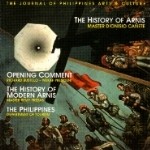
February 28, 1997 By MO1
This article was reprinted with the author’s permission from the Souvenir Edition of Arnisador Magazine published by Goodwill Publications Limited. More information about the magazine can be obtained by calling Peter Morgan in London at +44 (0) 171-895 0800. Saturday, June 1st, 1996 LAMECO: Legacy of Steel By Steve Tarani Swollen knuckles, bleeding forearms and […]
April 10, 1997 By MO1
There is no excerpt because this is a protected post.
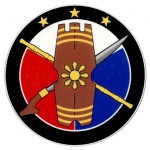
January 10, 1998 By MO1
Kapisanang Mandirigma – A federation of warriors from different disciplines of the Warrior Arts of the Philippines. It is not a style, nor a representation of any singular style, but rather a federation of practitioners with similar goals to provide a vehicle for growth and personal discovery through continued training. Founded in 1998 by Guros […]
May 24, 1998 By MO1
Mandirigma.org - Online Since 1998 Mandirigma Research Organization also known as mandirigma.org is a project of Kapisanang Mandirigma. Their focus includes preserving and promoting the Warrior Arts commonly known as Kali, Eskrima and Arnis. The Warrior Arts is one of the most important aspects of any society because its very nature is to defend and preserve […]
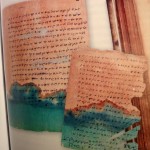
February 21, 1999 By MO1
Baybayin Baybayin is a pre-Spanish Philippine writing system. It is a member of the Brahmic family and is recorded as being in use in the 16th century. It continued to be used during the Spanish colonization of the Philippines up until the late 19th Century. The term Baybay literally means “to spell” in Tagalog. Baybayin […]

May 18, 1999 By MO1
Kapisanang Mandirigma founders Guro Ariel Flores Mosses, Guro Arnold Noche, Guro Bud Balani and Guro Dino Flores mentioned in the Virtual Filipino Martial Arts Museum’s “Top 200 Living Guro’s” List Exerpt from: http://www.filipinomartialartsmuseum.com/index.htm Welcome to the Filipino Martial Arts Museum, the virtual museum and repository of knowledge of Filipino Martial Arts (FMA) systems, styles, […]

February 13, 2000 By MO1
Sticks of Death (Arnis: The Sticks of Death) This Filipino Martial Arts action film features Roland Dantes. Dantes plays Johnny Guerrero, a man who masters the ancient art of arnis with the help of his grandfather to get revenge on a group of crooks who attempted to beat him to death. Using two deadly sticks, […]
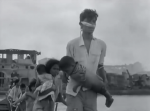
July 1, 2000 By MO1
The Battle of Manila – Starts with discussion from 2 Vets memories of the WW2 Japanese invasion and internment of civilians to the military incursion to rescue the civilian prisoners at Santo Tomas and Battle of Corregidor. Battle scenes in Philippines, views of rescued US civilians, street fighting in Manila at Intramuros, bridges destroyed. […]
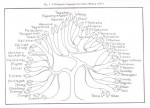
July 17, 2000 By MO1
“PHILIPPINE LANGUAGE TREE”, William Henry Scott (1984)
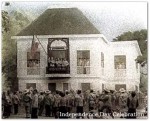
June 10, 2001 By MO1
June 12 as Independence Day by Diosdado Macapagal Former President of the Philippines “A nation is born into freedom on the day when such a people, moulded into a nation by a process of cultural evolution and sense of oneness born of common struggle and suffering, announces to the world that it asserts its natural […]
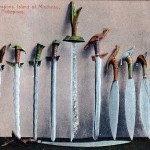
January 29, 2002 By MO1
The Moro Kris The kris is the most famous Moro weapon. Variations are found in every Moro tribe and it was a key symbol of a man’s status and rank in society as well as being a powerful talisman. Kris blades are wide at the base, double-edged, and can be waved, half-waved half-straight, or straight […]

January 26, 2003 By MO1
Inhabiting the rugged terrain of the Cordillera Region of Northern Philippines are six ethno-linguistic tribes known as the Ibaloy, Kankana-ey, Ifugao, Kalinga, Apayao/Isneg, and the Bontoc. They are referred to by a generic term, Igorot, a word coined from the root word, “golot” meaning mountain. Unlike most of the Philippines, which were ruled by Spaniards […]
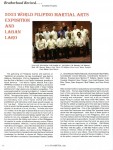
May 23, 2003 By MO1
World Filipino Martial Arts Expo 2003, Bellevue, Washington

January 28, 2005 By MO1
The Butuan Silver Strip by Hector Santos © 1996 by Hector Santos All rights reserved. http://www.bibingka.com/dahon/mystery/silver.htm The Butuan area has been a rich source of material from ancient Philippines for both treasure hunters and trained archaeologists. So it was in the mid-seventies when a team from the National Museum of the Philippines excavating a site […]

May 23, 2006 By MO1
Noli Me Tangere is a novel by Filipino polymath José Rizal and first published in 1887 in Berlin, Germany. Early English translations used titles like An Eagle Flight and The Social Cancer, but more recent translations have been published using the original Latin title. Though originally written in Spanish, it is more commonly published […]

June 21, 2007 By MO1
Cordillera Administrative Region The Cordillera Administrative Region (CAR) of the Philippines is a land-locked region consists of the provinces of Abra, Benguet, Ifugao, Kalinga, Mountain Province and Apayao. Baguio City is the regional center. The Cordillera region encompasses most of the areas within the Cordillera Central mountain range of Luzon, the largest range in the […]

January 10, 2011 By MO1
Mandirigma Research Organization/Mandirigma.org, a project of Kapisanang Mandirigma, is a research organization dedicated to cultural research. Their focus includes preserving and promoting the Warrior Arts of the Philippines commonly known as Kali, Eskrima and Arnis. The Warrior Arts is one of the most important aspects of any society because its very nature is to defend […]
Copyright © 2025 · Lifestyle Theme on Genesis Framework · WordPress · Log in